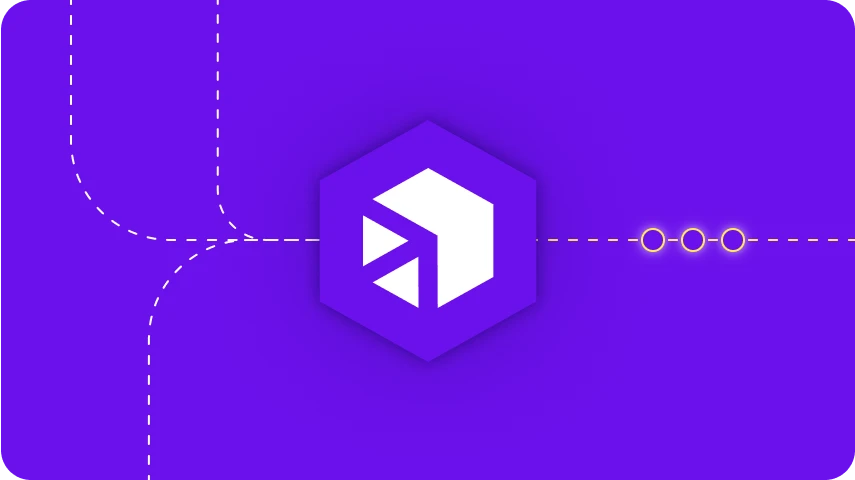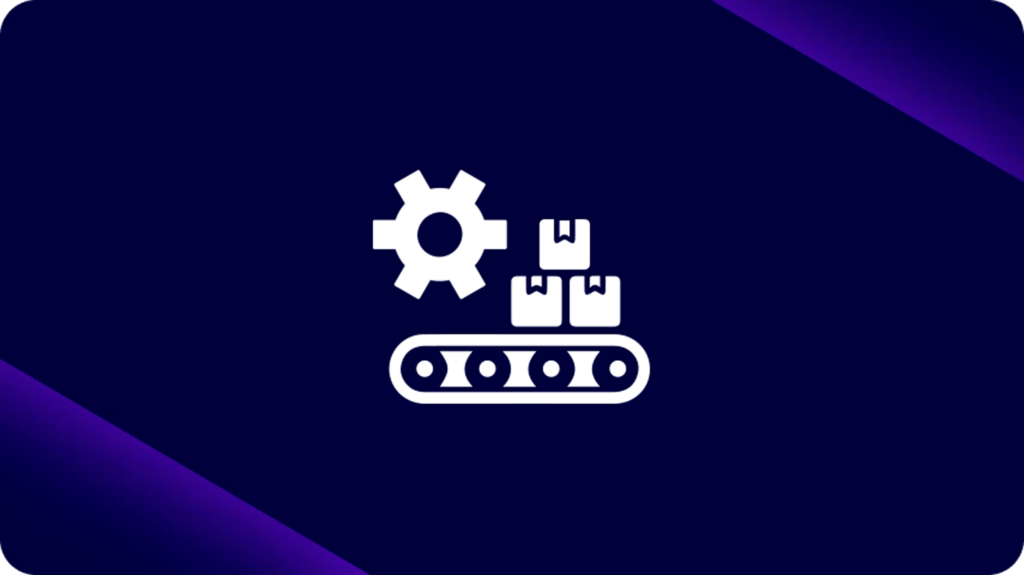agosto 9, 2023
Seus desenvolvedores profissionais gastam muito tempo escrevendo códigos tediosos para dar suporte à implementação do MuleSoft? Você está frustrado ao ver a preciosa largura de banda desviada para treinamento e certificação simplesmente para que sua equipe possa usar a tecnologia de integração destinada a atendê-los?
Bem, entre na fila. Se sua empresa depende da MuleSoft para apoiar sua estratégia de integração, a espera pode ser longa (e cara).

Quando a tecnologia legada deixa você na mão, importantes objetivos de inovação permanecem ambiciosos, pois sua equipe de integração fica sobrecarregada com tarefas rotineiras e demoradas. Certamente não ajuda que apenas um subconjunto da sua base de recursos seja certificado no MuleSoft e seja capaz de realizar o trabalho.
Para decidir se a sua organização é mais adequada para tentar outra abordagem, aqui está uma lista inicial de considerações a serem avaliadas:
- Recursos disponíveis
- Habilidades e capacidades técnicas de sua equipe existente
- Impacto econômico total e retorno sobre o investimento (ROI) do projeto
- Tempo necessário para cada etapa da integração (construir, executar, monitorar)
Quando estiver pronto para revisar suas opções de tecnologia, uma das primeiras perguntas que você encontrará é se você precisa de um código profissional ou low-code solução. Mas e se você não tivesse que escolher?
>> Agende uma demonstração personalizada com nossa equipe de especialistas e veja como o iPaaS da Digibee trará eficiência ao seu negócio.
Pro-Code versus Low-Code
Ambos os termos estão bem estabelecidos, mas o significado percebido de cada um provavelmente varia de pessoa para pessoa, visto que têm sido amplamente aplicados. Vamos começar com um nível definido nas definições básicas. De acordo com as pessoas em trio, veja como essas metodologias se alinham:
- Código pró – Uma abordagem mais convencional para o desenvolvimento de software, com desenvolvedores profissionais controlando todos os aspectos do trabalho, incluindo codificação, teste, otimização e implantação – do início ao fim.
- Abordagem low-code – Uma abordagem mais simples e acessível para o desenvolvimento de software que aproveita a infraestrutura existente por meio de uma plataforma de desenvolvimento. Os desenvolvedores usam uma metodologia de arrastar e soltar para configurar o aplicativo ou a página da Web necessária. Low-code é mais acessível, frequentemente usado por pessoas menos experientes para realizar tarefas simples.
Agora vamos examinar a metodologia de codificação baseada no modelo de integração:
| Interno (código pró) | iPaaS convencional (código pró) | iPaaS moderno (pró e low-code) |
|---|---|---|
| – Integrações criadas internamente – Desenvolvedores de código pró qualificados | – Integrações criadas pela MuleSoft – Desenvolvedores de código pró qualificados e certificados | – Integrações criadas pela equipe de desenvolvimento dentro do Digibee iPaaS – Engenheiros de software júnior, intermediário e sênior |
Digibee simplifica a complexidade da codificação, permitindo que desenvolvedores e engenheiros de software de todos os tipos usem a plataforma para que todos os membros de sua equipe de desenvolvimento possam contribuir. Nosso low-code A interface amplifica as habilidades de engenharia de software de todos os trabalhadores para maior produtividade em toda a equipe.
Os desenvolvedores juniores ajudam no trabalho pesado, enquanto os desenvolvedores seniores se concentram em projetos de maior prioridade, incluindo a criação de código conforme necessário. Isso permite que todos os membros da equipe se concentrem mais em inovações estratégicas e na construção – à medida que a integração deixa de funcionar como um gargalo. Com a codificação manual opcional e necessária apenas para projetos de maior valor, a equipe é mais produtiva e capaz de entregar um ROI muito maior.
Leia o e-book: 5 (+1) razões para os clientes da MuleSoft escolherem uma solução de integração moderna para saber mais.
Vamos nos aprofundar em cada modelo de integração.
Interno (código pró)
Os desenvolvedores e engenheiros de software internos muitas vezes se orgulham de criar soluções de TI desenvolvidas internamente e muitas vezes estão ansiosos para enfrentar um grande projeto, como uma integração multifacetada. Portanto, não é surpresa que muitas empresas optem por criar e manter suas próprias integrações.
No entanto, esta abordagem cria alguns riscos e desafios sérios:
- O sistema aumenta em complexidade à medida que são criadas integrações ponto a ponto adicionais, exigindo mais tempo e recursos para manter, prejudicando o trabalho de maior valor
- Apenas um subconjunto de desenvolvedores tem o conhecimento de domínio para compreender o funcionamento interno do sistema, colocando a empresa em maior risco cada vez que alguém sai, ao mesmo tempo que reduz o conjunto de recursos
- Aumento contínuo do escopo à medida que desenvolvedores e engenheiros constroem cada integração do zero com níveis crescentes de complexidade
Inicialmente, esses sistemas funcionam bem, proporcionando baixos custos iniciais com a equipe de integração totalmente sob controle. Mas com o tempo, a plataforma se torna complicada e demorada à medida que os conectores e a manutenção de código relacionada aumentam e os aplicativos evoluem. Em vez de apoiar a inovação, os sistemas internos acabam por impedi-la.
Leia o caso de uso: Um confronto de integração empresarial: DIY versus Digibee para saber mais.
iPaaS convencional (pró-código)
Embora você possa ter pensado que mudar para um modelo iPaaS com um provedor estabelecido como a MuleSoft era o caminho mais rápido e fácil para apoiar sua estratégia de integração, a plataforma MuleSoft apresenta aos usuários algumas deficiências gritantes.
Os produtos iPaaS convencionais dependem de desenvolvedores de código profissional para carregar a carga. A implementação de meses e os requisitos especializados de certificação MuleSoft paralisam sua estratégia de integração, enquanto seu carteira de TI continua a crescer sem controle.
- Tecnologia excessivamente complexa estende o tempo de implementação para meses e até anos
- Os desenvolvedores do Pro-code devem realizar o trabalho, limitando os recursos disponíveis às pessoas mais experientes (e devidamente certificadas).
- A manutenção, o EOL e outros trabalhos demorados têm precedência sobre os caminhos da inovação, resultando em backlog de TI cada vez maior
iPaaS moderno (pro e low-code)
Todo desenvolvedor de software escreve código – esse é geralmente o lugar feliz deles – então por que não fornecer à sua equipe um modelo de integração que oferece o melhor dos dois mundos?
O Digibee não elimina a criatividade da integração; simplesmente torna mais rápido e fácil para os desenvolvedores interagir com diferentes componentes da interface. Nosso low-code arrastar e soltar a tela elimina a complexidade e grande parte da codificação normalmente necessária. As integrações empresariais não precisam mais de uma tonelada de codificação especializada, liberando engenheiros e desenvolvedores de software para resolver problemas e inovar.
3 Modelos de Integração: Prós e Contrass
| Solução de Integração | Interno (Pro-Code) | iPaaS convencional (Pro-Code) | Digibee Modern iPaaS (Pro e Low-Code) |
|---|---|---|---|
| Recursos | Engenheiros e desenvolvedores de software altamente qualificados | Engenheiros e desenvolvedores de software altamente qualificados com treinamento e certificação especializados | Desenvolvedores em todos os níveis |
| Custo | – Maior custo para reter especialistas de domínio interno – Processo de implementação demorado Custos contínuos de manutenção e gerenciamento | – Licenciamento e preços complexos – Alto custo de implementação demorada – Investimento contínuo em formação e certificação – Maior custo por locação para desenvolvedores certificados pela MuleSoft – Manutenção e gerenciamento contínuos do sistema – Suporte ao cliente | – Modelo de preços simples e completo (3 SKUs!) – Treinamento, suporte e manutenção incluídos na assinatura – Todos os desenvolvedores estão habilitados a fazer o trabalho |
| Tempo para valorizar | – Meses a anos – Longo tempo de implementação para construir do zero usando recursos internos | – Meses a anos – Longa implementação devido ao produto complexo – Os requisitos de certificação limitam o pool de recursos | – Dias a semanas – Implementação curta com todos os envolvidos |
| Escalabilidade | Limitado pela complexidade e pelas habilidades cada vez maiores da equipe interna de TI | – Escalabilidade ilimitada com custos adicionais e contínuos. | Escalabilidade ilimitada com custos adicionais mínimos. |
| Riscos | – Ponto unico de falha – Conhecimento do domínio perdido quando funcionários-chave saem | – Aumento de custos e dependências à medida que diferentes componentes exigem atualizações, EOL e manutenção | Flexível, a plataforma oferece suporte a uma infraestrutura combinável para aumentar a agilidade e diminuir riscos |
A diferença Digibee: Low-Code para Pro-Coders
Digibee tem tudo sob controle para uma implementação rápida e tranquila. Nossa plataforma de integração nativa da nuvem e pronta para empresas acelera o tempo de obtenção de valor, mitiga riscos, ajuda a reduzir custos de TI e fornece uma tecnologia interativa que suporta facilmente uma ampla gama de talentos de TI.
Descubra todos os benefícios da moderna plataforma de integração em nuvem da Digibee, incluindo comparações detalhadas entre o modelo tradicional da MuleSoft e o iPaaS da Digibee. Leia o e-book: 5 (+1) motivos para os clientes da MuleSoft escolherem uma solução de integração moderna.
Para mais informações, leia Histórias de sucesso de clientes da Digibee or entre em contato com a Digibee para agendar uma demonstração.









